The Transformation of Coastal Governance, from Human Ecology to Local State, in the Jimei Peninsula, Xiamen, China
Abstract
1. Introduction
2. Materials and Methods
2.1. Study Area
2.2. Study Framework
2.3. Method Design and Study Materials
3. Results
3.1. The Changes in the Governance of the Coastal Zone in the Jimei Peninsula
3.2. The Scale Politics and Functional Shift in Coastal Zone Governance
3.3. The Meltdown of Coastal Human Ecology
4. Discussion
4.1. Scaling Up: Appropriating International Projects to Shape the Coastal Zone
4.2. Reform: Confiscation of Coastal Access Rights
4.3. Silence and Conflict-Free: Discipline and Punishment
4.4. Transformation of Governance Patterns: Vertical Integration of All Scales
5. Conclusions
Supplementary Materials
Author Contributions
Funding
Data Availability Statement
Acknowledgments
Conflicts of Interest
Correction Statement
References
- Campbell, L.M.; Gray, N.J.; Fairbanks, L.; Silver, J.J.; Gruby, R.L.; Dubik, B.A.; Basurto, X. Global oceans governance: New and emerging issues. Annu. Rev. Environ. Resour. 2016, 41, 517–543. [Google Scholar] [CrossRef]
- Carothers, C. Fisheries privatization, social transitions, and well-being in Kodiak, Alaska. Mar. Policy. 2015, 61, 313–322. [Google Scholar] [CrossRef]
- Burggren, W.W.; McMahon, B.R. Biology of the land crabs: An introduction. In Biology of the Land Crabs; Burggren, W.W., Ed.; Academic Press: Cambridge, UK, 1988. [Google Scholar]
- Alexander, H. A preliminary assessment of the role of the terrestrial decapod crustaceans in the Aldabran ecosystem. Philos. Trans. R. Soc. Lond. Ser. B Biol. Sci. 1979, 286, 241–246. [Google Scholar]
- O’Dowd, D.J.; Green, P.T.; Lake, P.S. Invasional ‘meltdown’ on an oceanic island. Ecol. Lett. 2003, 6, 812–817. [Google Scholar] [CrossRef]
- Hartnoll, R. Growth and molting. In Biology of the Land Crabs; Burggren, W.W., Ed.; Academic Press: Cambridge, UK, 1988. [Google Scholar]
- Samaniego-Herrera, A.; Boudjelas, S.; Harper, G.A.; Russell, J.C. Assessing the critical role that land crabs play in tropical island rodent eradications and ecological restoration. In Island Invasives: Scaling up to Meet the Challenge; Veitch, M.N.C., Martin, A.R., Russell, J.C., West, C.J., Eds.; IUCN: Switzerland, 2019. [Google Scholar]
- Brook, S.; Grant, A.; Bell, D. Can land crabs be used as a rapid ecosystem evaluation tool? A test using distribution and abundance of several genera from the Seychelles. Acta Oecol. 2009, 35, 711–719. [Google Scholar] [CrossRef]
- Tsai, S.-C.; Seino, S.; Lee, S.-H. Deterioration of Coastal Ecosystem: A Case Study of the Banana Bay Ecological Reserve in Taiwan. Land 2022, 11, 1571. [Google Scholar] [CrossRef]
- Huang, L.-H.; Jiang, Y.; Lin, C.; Li, T.-W.; Chen, F.; Wang, W.-Y. Research on the coupling coordination relationship between Xiamen Port development and coastal eco-nvironment evolution. Environ. Pollut. Prev. 2020, 900, 890–893. [Google Scholar]
- Bao, J.; Wu, D.-T. Space, Scale and System: A Geographical Study of China’s Land and Sea Coordinated Development Strategy; Southeast University Press: Nanjing, China, 2016. [Google Scholar]
- Yu, W.-W. Research on Ecological Risk Assessment of Regional Strategic Decision-Making in Coastal Zone; University of Xiaman: Xiaman, China, 2012. [Google Scholar]
- Sun, C.-Z.; Cao, Q.; Zou, W. Assessment of marine economy resilience of coastal cities in Bohai Sea Ring Area based on entropy efficiency model. J. Ningbo Univ. 2020, 33, 10–18. [Google Scholar]
- Hartnoll, R.G.C.P. A mass recruitment event in the land crab Gecarcinus ruricola (Linnaeus, 1758) (Brachyura: Grapsoidea: Gecarcinidae), and a description of the megalop. Zool. J. Linn. Soc. 2006, 146, 149–164. [Google Scholar] [CrossRef]
- Hicks, J.W.; Rumpff, H.; Yorkston, H. Christmas Island: Christmas island natural history association Christmas Island. In Christmas Crabs, 2nd ed.; Christmas Island Natural History Association: Pontotoc, MS, USA, 1990. [Google Scholar]
- Brown, I.; Fletcher, W.J. The Coconut Crab: Aspects of the Biology and Ecology of Birgus latro in the Republic of Vanuatu; Australian Centre for International Agricultural Research: Canberra, Australia, 1991. [Google Scholar]
- Ducrotoy, J.-P.; Furukawa, K. Integrated coastal management: Lessons learned to address new challenges. Mar. Pollut. Bull. 2016, 102, 241–242. [Google Scholar] [CrossRef]
- Mokhtar, M.B.; Aziz, S.A.B.A.G. Integrated coastal zone management using the ecosystems approach, some perspectives in Malaysia. Ocean Coast. Manag. 2003, 46, 407–419. [Google Scholar] [CrossRef]
- Cooper, J.A.G. Progress in Integrated Coastal Zone Management (ICZM) in Northern Ireland. Mar. Policy 2011, 35, 794–799. [Google Scholar] [CrossRef]
- Satoquo, S.; Kojima, A.; Hinata, H.; Magome, S.N.; Isob, A. Multi-sectoral research on East China sea beach litter based on oceanographic methodology and local knowledge. J. Coast. Res. 2009, 56, 4. [Google Scholar] [CrossRef]
- Wescott, G. Reforming coastal management to improve community participation and integration in Victoria, Australia. Coast. Manag. 1998, 26, 3–15. [Google Scholar] [CrossRef]
- Dahuri, R.; Dutton, I.M. Integrated coastal and marine management enters a new era in Indonesia. Integr. Coast. Zone Manag. 2000, 1, 1–16. [Google Scholar]
- Marroni, E.V.; Asmus, M.L. Historical antecedents and local governance in the process of public policies building for coastal zone of Brazil. Ocean Coast. Manag. 2013, 76, 30–37. [Google Scholar] [CrossRef]
- Krelling, A.P.; Williams, A.T.; Turra, A. Differences in perception and reaction of tourist groups to beach marine debris that can influence a loss of tourism revenue in coastal areas. Mar. Policy 2017, 85, 87–99. [Google Scholar] [CrossRef]
- Vousdoukas, M.I.; Ranasinghe, R.; Mentaschi, L.; Plomaritis, T.A.; Athanasiou, P.; Luijendijk, A.; Feyen, L. Sandy coastlines under threat of erosion. Nat. Clim. Change 2020, 10, 260–263. [Google Scholar] [CrossRef]
- Suárez-Rojas, C.; Hernández, M.G.; León, C.J. Segmented importance-performance analysis in whale-watching: Reconciling ocean coastal tourism with whale preservation. Ocean Coast. Manag. 2023, 233, 106453. [Google Scholar] [CrossRef]
- Macdonald, C.; Turffs, D.; McEntee, K.; Elliot, J.; Wester, J. The relationship between tourism and the environment in Florida, USA: A media content analysis. Ann. Tour. Res. Empir. Insights 2023, 4, 100092. [Google Scholar] [CrossRef]
- Bennett, N.J. In political seas: Engaging with political ecology in the ocean and coastal environment. Coast. Manag. 2019, 47, 67–87. [Google Scholar] [CrossRef]
- Robbins, P. Political Ecology: A Critical Introduction, 2nd ed.; John Wiley & Sons Ltd.: Hoboken, NJ, USA, 2012. [Google Scholar]
- Silver, J.J. Weighing in on scale: Synthesizing disciplinary approaches to scale in the context of building interdisciplinary resource management. Soc. Nat. Resour. 2008, 21, 921–929. [Google Scholar] [CrossRef]
- Chambers, C.; Helgadóttir, G.; Carothers, C. “Little kings”: Community, change and conflict in Icelandic fisheries. Marit. Stud. 2017, 16, 10. [Google Scholar] [CrossRef]
- Stonich, S.C. Political ecology of tourism. Ann. Tour. Res. 1998, 25, 25–54. [Google Scholar] [CrossRef]
- Ajibade, I. Can a future city enhance urban resilience and sustainability? A political ecology analysis of Eko Atlantic city, Nigeria. Int. J. Disaster Risk Reduct. 2017, 26, 85–92. [Google Scholar] [CrossRef]
- Donkersloot, R.; Menzies, C. Place-based fishing livelihoods and the global ocean: The Irish pelagic fleet at home and abroad. Marit Stud. 2015, 14, 1–19. [Google Scholar] [CrossRef]
- Vázquez, L.M. Implementation challenges of climate change adaptation initiatives in coastal lagoon communities in the Gulf of Mexico. Marit. Stud. 2017, 16, 1–16. [Google Scholar] [CrossRef]
- Walker, P.A. Reconsidering ‘regional’political ecologies: Toward a political ecology of the rural American West. Prog. Hum. Geogr. 2003, 27, 7–24. [Google Scholar] [CrossRef]
- Lin, X.-H.; Peng, X.; Li, X.-J. Research on the characteristics of my country’s coastal zone economic development under the new situation. Mar. Econ. 2019, 12–19. [Google Scholar]
- Wang, L.-B. Investigation of the social and cultural changes of Sea Island fishing villages—A case study on Dayian Island fishing village. In Sixth Postgraduate Symposium of the School of Ethnology and Sociology; Minzu University of China: Beijing, China, 2012; pp. 89–96. [Google Scholar]
- Dai, Z.-F.; Zhang, H.-B.; Zhou, Q.; Tian, Y.; Chen, T.; Tu, C.; Fu, C.; Luo, Y. Occurrence of microplastics in the water column and sediment in an inland sea affected by intensive anthropogenic activities. Environ. Pollut. 2018, 242, 1557–1565. [Google Scholar] [CrossRef] [PubMed]
- Wang, T.; Hu, M.; Song, L.; Yu, J.; Liu, R.; Wang, X.; Wang, Z.; Sokolova, I.M.; Huang, W.; Wang, Y. Coastal zone use influences the spatial distribution of microplastics in Hangzhou Bay, China. Environ. Pollut. 2020, 266, 115137. [Google Scholar] [CrossRef]
- Xue, X.; Hong, H.; Charles, A.T. Cumulative environmental impacts and integrated coastal management: The case of Xiamen, China. J. Environ. Manag. 2004, 71, 271–283. [Google Scholar] [CrossRef]
- Bureau, X.O.F. Treading the Waves and Flying Songs: Oral Records of Key Figures in the Twenty Years of Comprehensive Management of the Coastal Zone in Xiamen from 1996 to 2016; Xiamen University Press: Xiamen, China, 2018. [Google Scholar]
- Islam, K.S. Successful Integrated Coastal Zone Management (ICZM) Program Model of a Developing Country (Xiamen, China)—Implementation in Bangladesh Perspective. Master Thesis, Xiamen University, Xiamen, China, 2009. [Google Scholar]
- Zhong, M.-D. Research on Population Ecology of Indo-Pacific Humpback Dolphin (Sousa Chinensis) in Xiamen Bay. Master’s Thesis, The Third Institute of Oceanography, Ministry of Natural Resources, Xiamen, China, 2021. [Google Scholar]
- Ma, C.; Liu, Y.; Zhuang, Z.-D.; Xu, C.-Y.; Shen, C.-C.; Tsai, J.-D. Analysis on the resource status and change reason of Branchiostoma balcheri in Xiamen Amphioxus Natural Reserve. J. Fish. Res. 2022, 44, 44–51. [Google Scholar] [CrossRef]
- You, T.-F.; Chen, X.-Y.; Lin, J.-X.; Ye, Q.-T. Investigation on nekton resources of spring in the west sea areas of Xiamen. J. Fish. Res. 2016, 38, 386. [Google Scholar]
- Zimmerer, K.S. Cultural ecology (and political ecology) in the ‘environmental borderlands’: Exploring the expanded connectivities within geography. Prog. Hum. Geogr. 2007, 31, 227–244. [Google Scholar] [CrossRef]
- Zimmerer, K.S. Cultural ecology: At the interface with political ecology-the new geographies of environmental conservation and globalization. Prog. Hum. Geogr. 2006, 30, 63–78. [Google Scholar] [CrossRef]
- Sun, J.-Q. Xiamen Jimei District Chronicle; Zhonghua Bookstore: Beijing, China, 2013. [Google Scholar]
- Committee CGESE. China Encyclopedia Geography-Xiamen Peninsula; World Book Publishing Company, Nanfang Daily Publishing House: Guangzhou, China, 2016. [Google Scholar]
- Lung, K.-H. Urban Sociology Theory and Applications; San Min Book: Taipei, Taiwan, 1978; pp. 102–115. [Google Scholar]
- Hawley, A.H. Human Ecology—A Theoretical Essay; The University of Chicago Press: Chicago, IL, USA, 1986; 8p. [Google Scholar]
- Zhang, Y.-Y.; Zou, Z.; Tsai, S.C. From Fishing Village to Jimei School Village: Spatial Evolution of Human Ecology. Int. J. Environ. Sustain. Prot. 2022, 2. [Google Scholar] [CrossRef]
- Chung, C.K.L.; Xu, J. Scale as both material and discursive: A view through China’s rescaling of urban planning system for environmental governance. Environ. Plan. C Gov. Policy 2016, 34, 1404–1424. [Google Scholar] [CrossRef]
- Huang, X.; Li, Y.; Hay, I. Polycentric city-regions in the state-scalar politics of land development: The case of China. Land Use Policy. 2016, 59, 168–175. [Google Scholar] [CrossRef]
- Wang, F.-L.; Liu, Y.-G. Towards a theoretical framework of ‘politics of scale’. Prog. Geogr. 2017, 36, 1500–1509. [Google Scholar]
- Oi, J.C. The role of the local state in China’s transitional economy. China Q. 1995, 144, 1132–1149. [Google Scholar] [CrossRef]
- Kirby, A. Sustainability, Adaptation and the Local State: An Overview. J. Sustain. Res. 2019, 1, e190012. [Google Scholar] [CrossRef]
- Oi, J.C. Fiscal Reform and the Economic Foundations of Local State Corporatism in China. World Politics 1992, 45, 99–126. [Google Scholar] [CrossRef]
- Saich, T. The Blind Man Feels the Elephant: An Analysis of Local Governments in China. Comp. Econ. Soc. Syst. 2006, 4, 96–104. [Google Scholar]
- Zhou, X. Authoritative System and Effective Governance: The Institutional Logic of State Governance in Contemporary China. Open Era 2011, 10, 67–85. [Google Scholar]
- Shu-Chen, T.; Su-Hsin, L. Construct Region from the Place: Donggang As The nucleus, in the Perspective of New Regional Geography. J. Geogr. Res. 2014, 60, 63–86. [Google Scholar] [CrossRef]
- Xu, X. Research on the Regional Market around the Taiwan Strait in the 16th and 17th Centuries; Xiamen University: Xiamen, China, 2003. [Google Scholar]
- Chen, H. Xiamen has become a demonstration area for marine pollution prevention and management projects in East Asian. Xiamen Daily, 14 November 1993. [Google Scholar]
- PEMSEA. Strengthening Coastal Governance and the Application of Integrated Coastal Management through an ICM Law; PEMSEA: 2016. Available online: http://pemsea.org/publications/case-studies/strengthening-coastal-governance-and-application-integrated-coastal (accessed on 13 May 2023).
- Wang, X.; Wang, L. State-enterprise relation, local economic priority, and corporate environmental responsibility. Appl. Econ. 2018, 25, 1–15. [Google Scholar] [CrossRef]
- Yin, R.K. Case Study Research: Design and Methods, 4th ed.; Sage: Thousand Oaks, CA, USA, 2009. [Google Scholar]
- Danjo, H. The Formation and Background of the Ming Dynasty Concept of Maritime Exclusion: From a Prohibition on Voyages in Foreign Waters to a Prohibition on Voyages for Trading with Foreigners. Orient. Hist. Res. 2004, 63, 421–455. [Google Scholar] [CrossRef]
- Liu, C.-F. China and East Asia in the seventeenth and eighteenth centuries. In Regional system Thinking from Asia; Mizoguchi, Y., Hamashita, T., Hiraishi, N., Miyajima, H., Eds.; University of Tokyo Press: Tokyo, Japan, 1993. [Google Scholar]
- Hu, K.-J. Farming the Sea, Herding and Fishing:A Study on the Fishery Activities of Fujian Coastal Residents in Ming and Qing Dynasties. Master’s Thesis, Guangxi Normal University, Guangxi, China, 2021. [Google Scholar]
- Chen, R.-X. Guangxu’s “Zhangpu County Chronicles” Volume 8, “Fuyi Xia”, Chinese Local Chronicles Collection: Fujian County Chronicles Series 31; Shanghai Bookstore Publishing House: Shanghai, China, 2000. [Google Scholar]
- Zhou, K. Chronicle of Xiamen, Fujian Province; Cheng Wen Publishing Co., Ltd.: Xiamen, China, 1967; p. 323. [Google Scholar]
- Zheng, Y. The Maritime Merchants and Pirates in Zhangzhou in the Ming and Qing Dynasties. J. Marit. Hist. Studies 2014, 02, 99–115. [Google Scholar]
- Dang, X.-H. The Historical Evolution and Contemporary Enlightenment of Marine Civil Organizations from the Ming and Qing Dynasties to the Republic of China—A Study Centered on Marine Fishery Production Mutual Aid Organizations. Agric. Archaeol. 2014, 03, 268–274. [Google Scholar]
- Zhuan, M. A Brief History of Jimei; Members of the Chen Clan: Jimei, China, 2000. [Google Scholar]
- Yang, B.-S.; Yan, G.-Z. Biography of Tan Kah Kee; Fujian People’s Publish: Fujian, China, 1981. [Google Scholar]
- Tsai, Q.-Y. Non-Governmental Organizations and Famine Relief: A Study of the Huayang Charity Association in the Republic of China; Commercial Press: Beijing, China, 2005. [Google Scholar]
- Chen, S.-G.; Pearson, S. Managing China‘s Coastal Environment: Using a Legal and Regulatory Perspective. Int. J. Environ. Sci. Dev. 2015, 6, 225–230. [Google Scholar] [CrossRef]
- Wang, Y.; Ji, X.-M. Environmental Characteristics and Changes of Coastal Ocean as Land-ocean Transitional Zone of China. Sci. Geogr. Sin. 2011, 31, 7. [Google Scholar]
- Yan, S.-H. Xiamen: Vigorously Crack down on Illegal Fishing and Seize 27 Illegal Boats. 15 November 2019. Available online: http://hyyyj.fujian.gov.cn/xxgk/hydt/jcdt/201911/t20191115_5098410.htm (accessed on 13 May 2023).
- Huang, R.; Yue, Y.; Chen, Y.; Jin, Z.; Peng, Q. Mode selection of modernization transformation of traditional fishing villages from the perspective of complex adaptive system. Oper. Manag. 2020, 1, 14–19. [Google Scholar]
- Yu, Y.; Han, X. Research on the relationship between fishermen’s social interaction and social transformation of fishing villages. Chin. Fish. Econ. 2007, 2, 13–16. [Google Scholar]
- Lin, Z. Transforming Mechanism, Invigorating Operations, Recreating Benefits—Investigation on the Restructuring of Xiamen Ocean Industry (Group) Co., Ltd. Chin. Econ. Issues 1994, 3, 54–57+26. [Google Scholar] [CrossRef]
- Tong, C.-F.; Zhang, H. Traditional Fishermen’s Marginalized Poverty in the New Normal Situation. J. Ocean. Univ. China 2016, 146, 46–53. [Google Scholar]
- Li, X.-S. Humanities Jimei: Chen Jianhuang, the Last Handcrafted Boat Builder in Xunjiang: Jimei Tourism. 2017. Available online: https://www.sohu.com/a/131493416_480173 (accessed on 13 May 2023).
- Zhu, X.-F. The Study of the Coastwise Fishermen in Fujian Province Since the Ming and Ching Dynasties. Master’s Thesis, Fujian Normal University, Fuzou, China, 2007. [Google Scholar]
- Chunfen, T.; Xixi, Z.; Yi, H. Marginalization of Fishermen: An Analytical Framework of Maritime Sociology. Sociol. Rev. China 2013, 1, 67–75. [Google Scholar]
- Iaccarino, M. Science and culture: Western science could learn a thing or two from the way science is done in other cultures. EMBO Rep. 2003, 4, 220–223. [Google Scholar] [CrossRef]
- Folke, C.; Colding, J.; Berkes, F. Synthesis: Building resilience and adaptive capacity in social-ecological systems. Navig. Soc. -Ecol. Syst. Build. Resil. Complex. Change 2003, 9, 352–387. [Google Scholar]
- Berkes, F. Traditional Ecological Knowledge and Resource Management; Taylor and Francis: Philadelphia, NY, USA; London, UK, 1999. [Google Scholar]
- Berkes, F.; Folke, C. Back to the future: Ecosystem dynamics and local knowledge. In Understanding Transformation in Human and Natural Systems; Gunderson, L.H., Holling, C.S., Eds.; Island Press: Washington, DC, USA, 2002; pp. 121–146. [Google Scholar]
- Hong, H.; Xu, L.; Zhang, L.; Chen, J.C.; Wong, Y.S.; Wan, T.S.M. Environmental fate and chemistry of organic pollutants in the sediment of Xiamen and Victoria Harbours. Mar. Pollut. Bull. 1995, 31, 229–236. [Google Scholar] [CrossRef]
- Zhang, L.-P.; Ye, X.; Feng, H.; Jing, Y.-H.; Ouyang, T.; Yu, X.-T.; Liang, R.; Gao, C.; Chen, W. Heavy metal contamination in western Xiamen Bay sediments and its vicinity, China. Mar. Pollut. Bull. 2007, 54, 974–982. [Google Scholar] [CrossRef]
- Maskaoui, K.; Zhou, J.L.; Hong, H.S.; Zhang, Z.L. Contamination by polycyclic aromatic hydrocarbons in the Jiulong River Estuary and Western Xiamen Sea, China. Environ. Pollut. 2002, 118, 109–122. [Google Scholar] [CrossRef]
- Li, J.; Huang, Z.Y.; Hu, Y.; Yang, H. Potential risk assessment of heavy metals by consuming shellfish collected from Xiamen, China. Environ. Sci. Pollut. Res. 2013, 20, 2937–2947. [Google Scholar] [CrossRef]
- Klumpp, D.W.; Hong, H.S.; Humphrey, C.; Wang, X.H.; Codi, S. Toxic contaminants and their biological effects in coastal waters of Xiamen, China. I. Organic pollutants in mussel and fish tissues. Mar. Pollut. Bull. 2002, 44, 752–760. [Google Scholar] [CrossRef]
- Klumpp, D.W.; Humphrey, C.; Hong, H.S.; Feng, T. Toxic contaminants and their biological effects in coastal waters of Xiamen, China. II. Biomarkers and embryo malformation rates as indicators of pollution stress in fish. Mar. Pollut. Bull. 2002, 44, 761–769. [Google Scholar] [CrossRef]
- Jin, X.-S.; Tang, Q.-S. Changes in fish species diversity and dominant species composition in the Yellow Sea. Fish. Res. 1996, 26, 337–352. [Google Scholar] [CrossRef]
- Yeung, L.W.Y.; So, M.K.; Jiang, G.B.; Taniyasu, S.; Yamashita, N.; Song, M.Y.; Wu, Y.; Li, J.; Giesy, J.P.; Guruge, K.S.; et al. Perfluorooctanesulfonate and related fluorochemicals in human blood samples from China. Environ. Sci. Technol. 2006, 40, 715–720. [Google Scholar] [CrossRef] [PubMed]
- Luo, X.-S.; Ding, J.; Xu, B.; Wang, Y.-J.; Li, H.-B.; Yu, S. Incorporating bioaccessibility into human health risk assessments of heavy metals in urban park soils. Sci. Total Environ. 2012, 424, 88–96. [Google Scholar] [CrossRef] [PubMed]
- Zhao, Y.G.; Wan, H.T.; Law, A.Y.S.; Wei, X.; Huang, Y.Q.; Giesy, J.P.; Wong, M.H.; Wong, C.K. Risk assessment for human consumption of perfluorinated compound-contaminated freshwater and marine fish from Hong Kong and Xiamen. Chemosphere 2011, 85, 277–283. [Google Scholar] [CrossRef]
- Chen, W.-Q.; Liu, Y.; Hong, H.-S.; Xiao-Feng, H. Research on the Value of Tourist-Recreation along the Eastern Coast of Xiamen Island. J. Xiamen Univ. 2001, 04, 914–921. [Google Scholar]
- China CPsGotPsRo. Reply of the State Council on the Overall Urban Planning of Xiamen City; State Council: Beijing, China, 2000. [Google Scholar]
- Government XMPs. The Fourteenth Five-Year Plan for National Economic and Social Development of Xiamen City and Outline of Long-term Goals for 2035; Xiamen Municipal People’s Government: Xiamen, China, 2021. [Google Scholar]
- Zhang, T. Xi Jinping Hosts Dialogue Between Emerging Market Countries and Developing Countries: People’s Daily Online Fujian Channel. 2017. Available online: http://fj.people.com.cn/BIG5/339045/340945/382650/index.html (accessed on 16 May 2023).
- Wank, D.L. Commodifying Communism: Business, Trust, and Politics in a Chinese City; Cambridge University Press: Cambridge, UK, 1999. [Google Scholar]
- Television, X.R. 3.1 km! The Jimei Sea Ecological Landscape Corridor is about to open! Sina, 23 May 2023. [Google Scholar]
- Statistics FPBo. GDP of Xiamen City Fujian: Fujian Provincial Bureau of Statistics. 2022. Available online: https://gdp.gotohui.com/show-181727 (accessed on 1 May 2023).
- Yang, S.-S.; Lin, L.-M. Xiamen’s GDP Growth Last Year Ranked First among 15 Similar Cities. Available online: http://m.news.cn/fj/2023-02/09/c_1129350181.htm. (accessed on 16 May 2023).
- Rong-Chang, L. Study on the Measurement and Economic Effect of Regional Tourism Industry Agglomeration—Take Xiamen as An Example. Master Thesis, Xiamen University, Xiamen, China, 2020. [Google Scholar]
- Fang, Q.-H. Strategic Environmental Assessment for Ecosystem Management in Coastal Areas. Ph.D. Thesis, Xiamen University, Xiamen, China, 2006. [Google Scholar]
- Wang, H.; Zou, Z.; Tsai, S.K. Exploring Environmental Restoration and Psychological Healing from Perspective of Resilience: A Case Study of Xinglin Bay Landscape Belt in Xiamen, China. Int. J. Environ. Sustain. Prot. 2022, 2, 44–54. [Google Scholar] [CrossRef]
- Hall, C.M. Trends in ocean and coastal tourism: The end of the last frontier? Ocean Coast. Manag. 2001, 44, 601–618. [Google Scholar] [CrossRef]
- PEMSEA. Safeguarding the Vulnerable Communities of Xiamen’s Western Seas Areas. ICM Solut. Sustain. Seas 2016. Available online: https://pemsea.org/publications/case-studies/safeguarding-vulnerable-communities-xiamen%E2%80%99s-western-seas-areas (accessed on 16 May 2023).
- Ma, X.-G.; Li, L.-Q. A reviewof overseas research on politics of scale in human geography. Hum. Geogr. 2016, 160, 6–12. [Google Scholar] [CrossRef]
- Wu, D. Visit Jimei Dashe in Xiamen, from a declining urban village to a gathering place for cultural and creative trends. China Business News, 1 February 2023. [Google Scholar]
- Ying, J.; Guo, Y.-F. The “two sessions” in Jimei District closed, and Chen Jianrong was elected as the director of the Standing Committee of the District People’s Congress: Xiamen Net. 2015. Available online: http://xm.fjsen.com/2015-01/30/content_15622759_2.htm (accessed on 16 May 2023).
- Daily, J. Jimei Dishermen Go Ashore to Build “Recreational Fishing Boats”. 3 May 2012. Available online: http://www.jimei.gov.cn/ywkd/jmbxw/201308/t20130802_56455.htm (accessed on 16 May 2023).
- Stepanova, O.; Bruckmeier, K. The relevance of environmental conflict research for coastal management. A review of concepts, approaches and methods with a focus on Europe. Ocean Coast. Manag. 2013, 75, 20–32. [Google Scholar] [CrossRef]
- Guo, Y.; Jiang, J.-B.; Li, S.-C. A Sustainable Tourism Policy Research Review. Sustainability 2019, 3187. [Google Scholar] [CrossRef]
- Heberer, T.; Schubert, G. County and township cadres as a strategic group: A new approach to political agency in China’s local state. In Critical Readings on the Communist Party of China (4 Vols Set); Brill: Leiden, The Netherlands, 2017; pp. 1141–1177. [Google Scholar]
- Schubert, G.; Ahlers, A.L. County and township cadres as a strategic group:“Building a New Socialist Countryside” in three provinces. China J. 2012, 67, 67–86. [Google Scholar] [CrossRef]
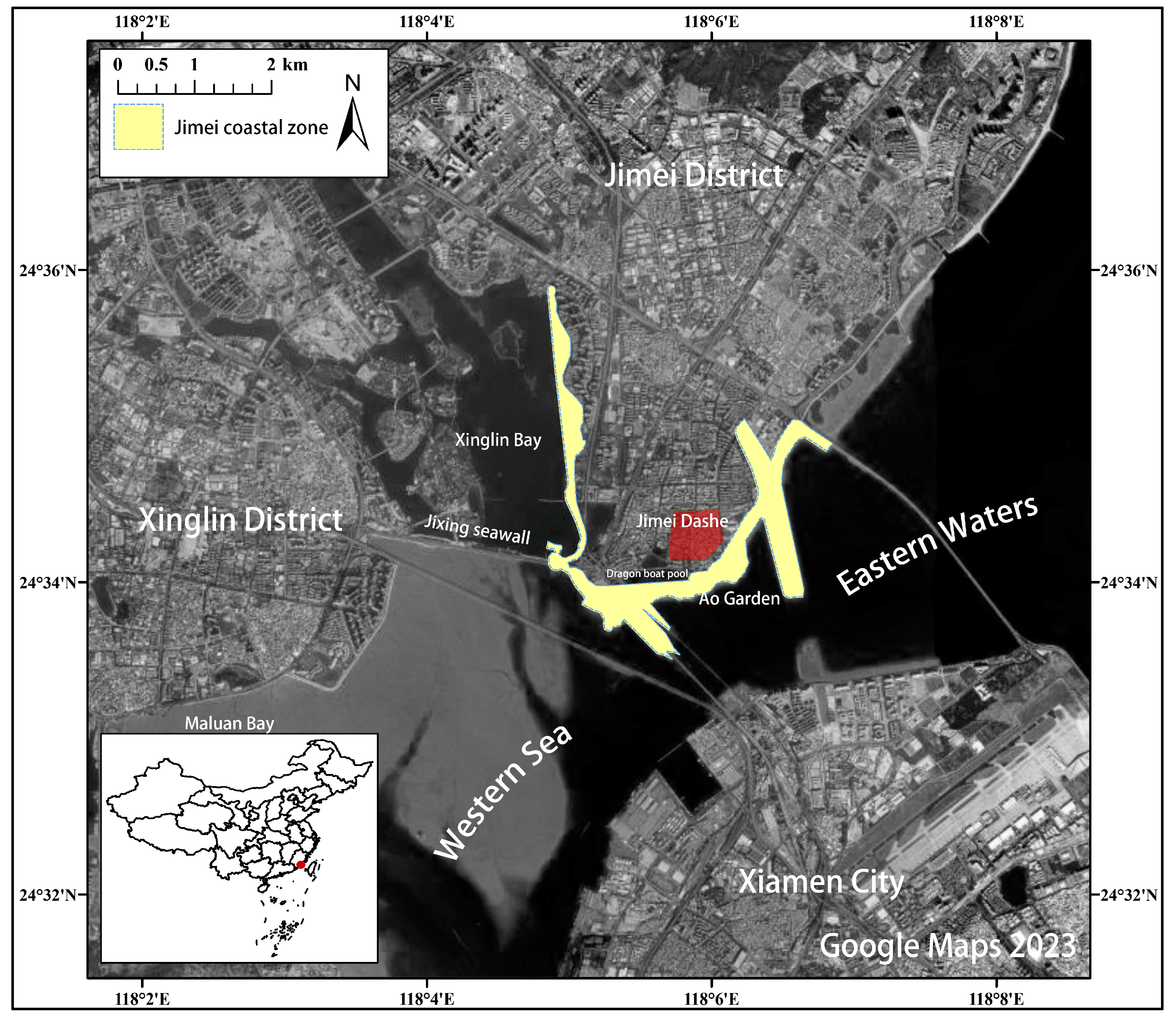

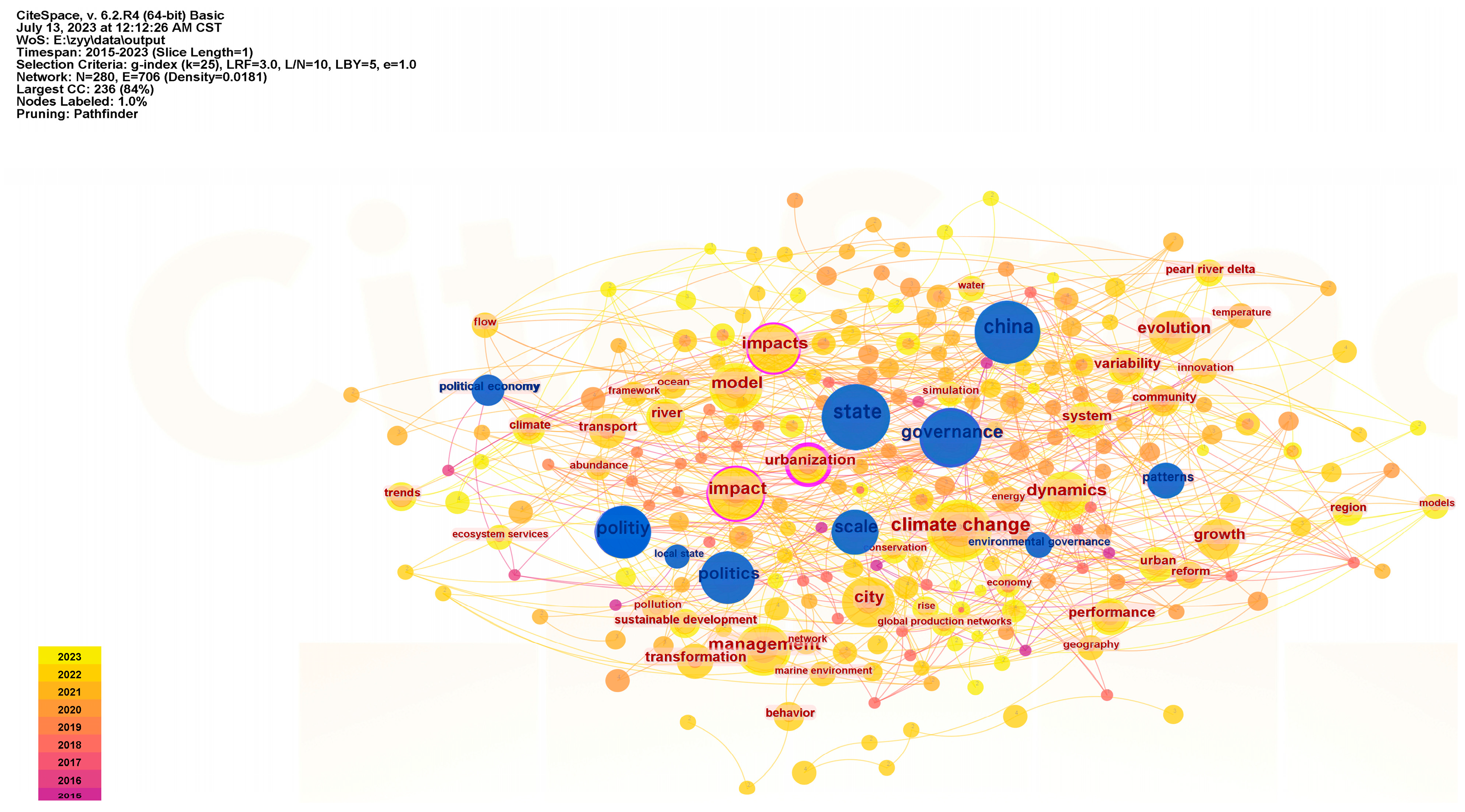
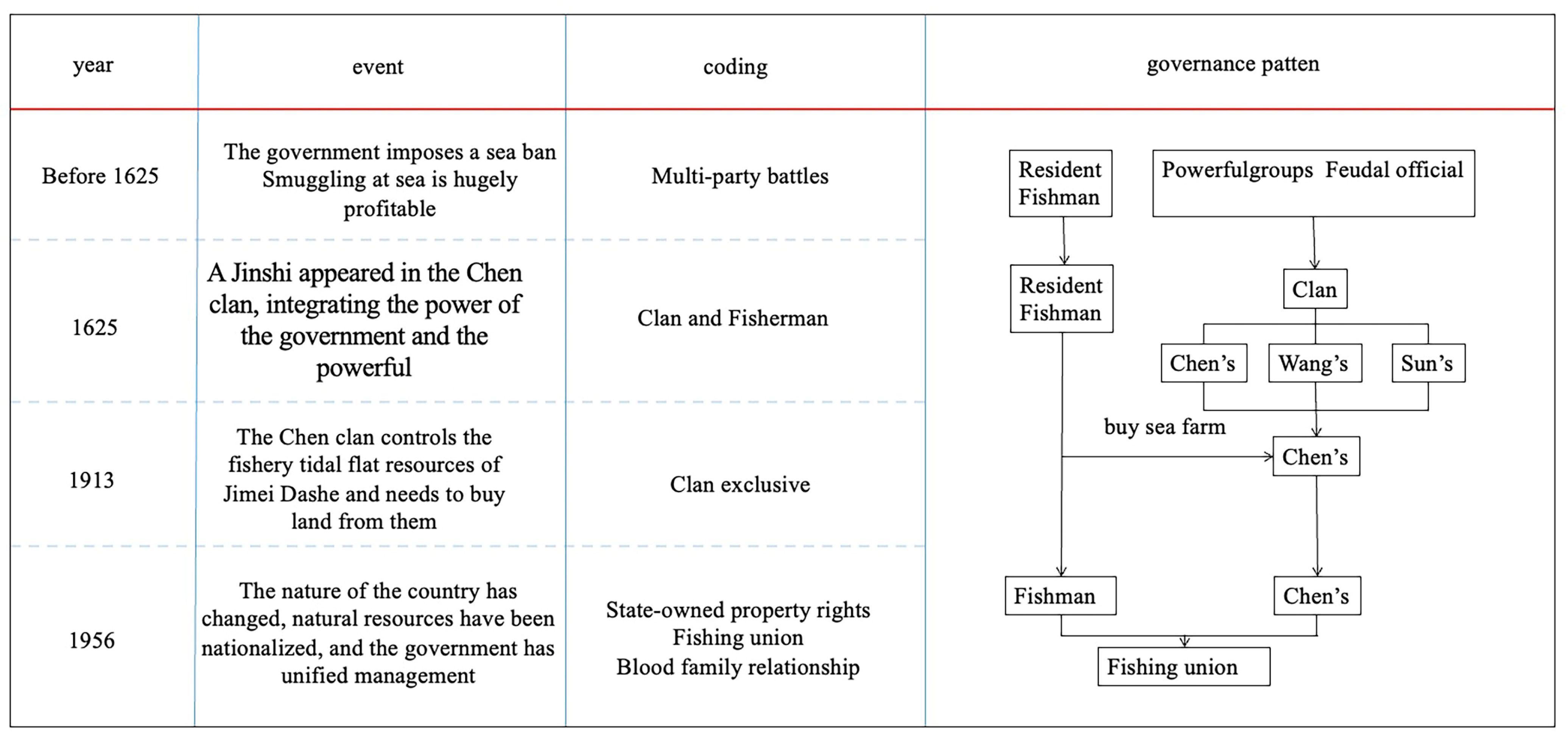
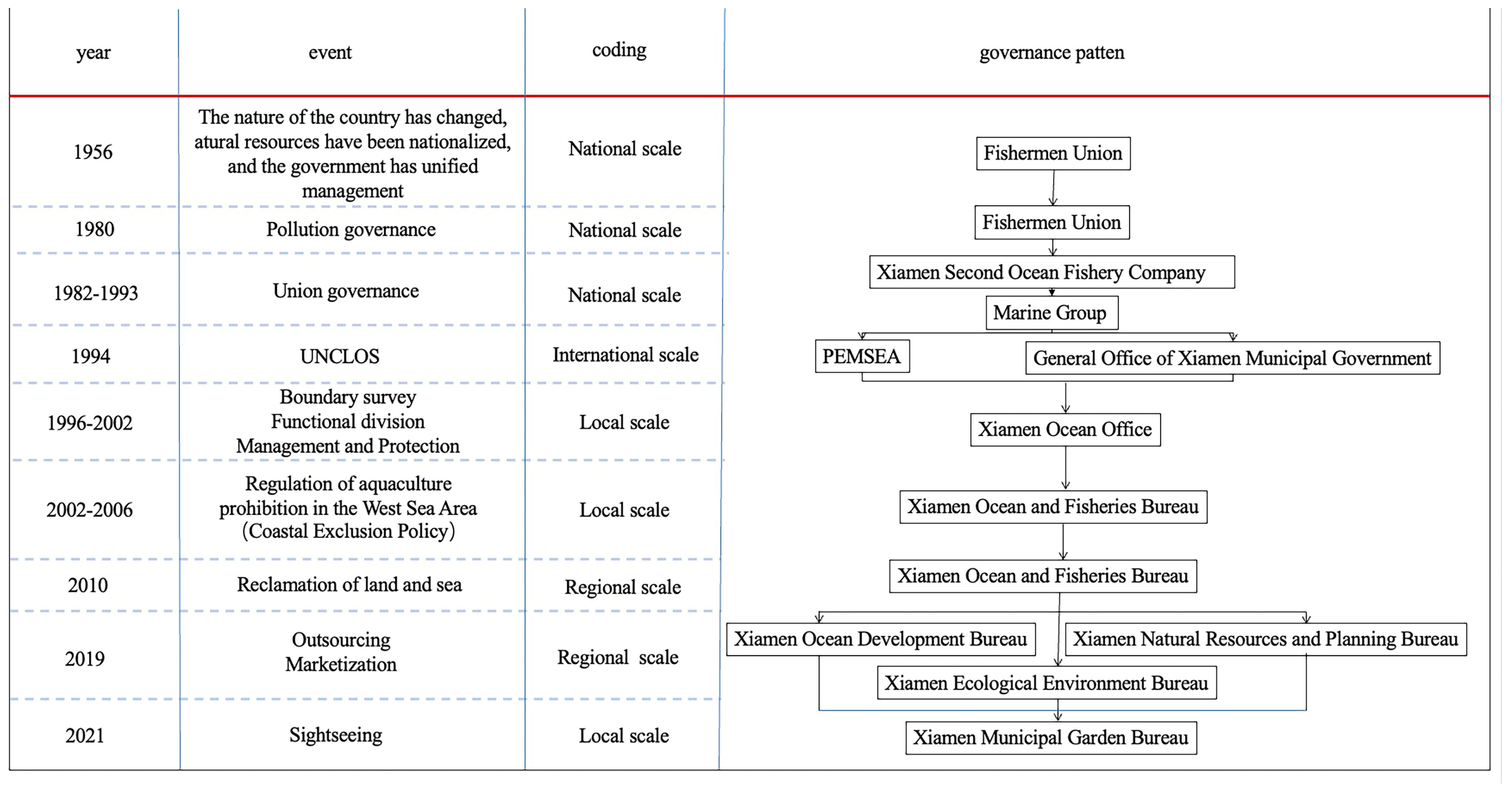

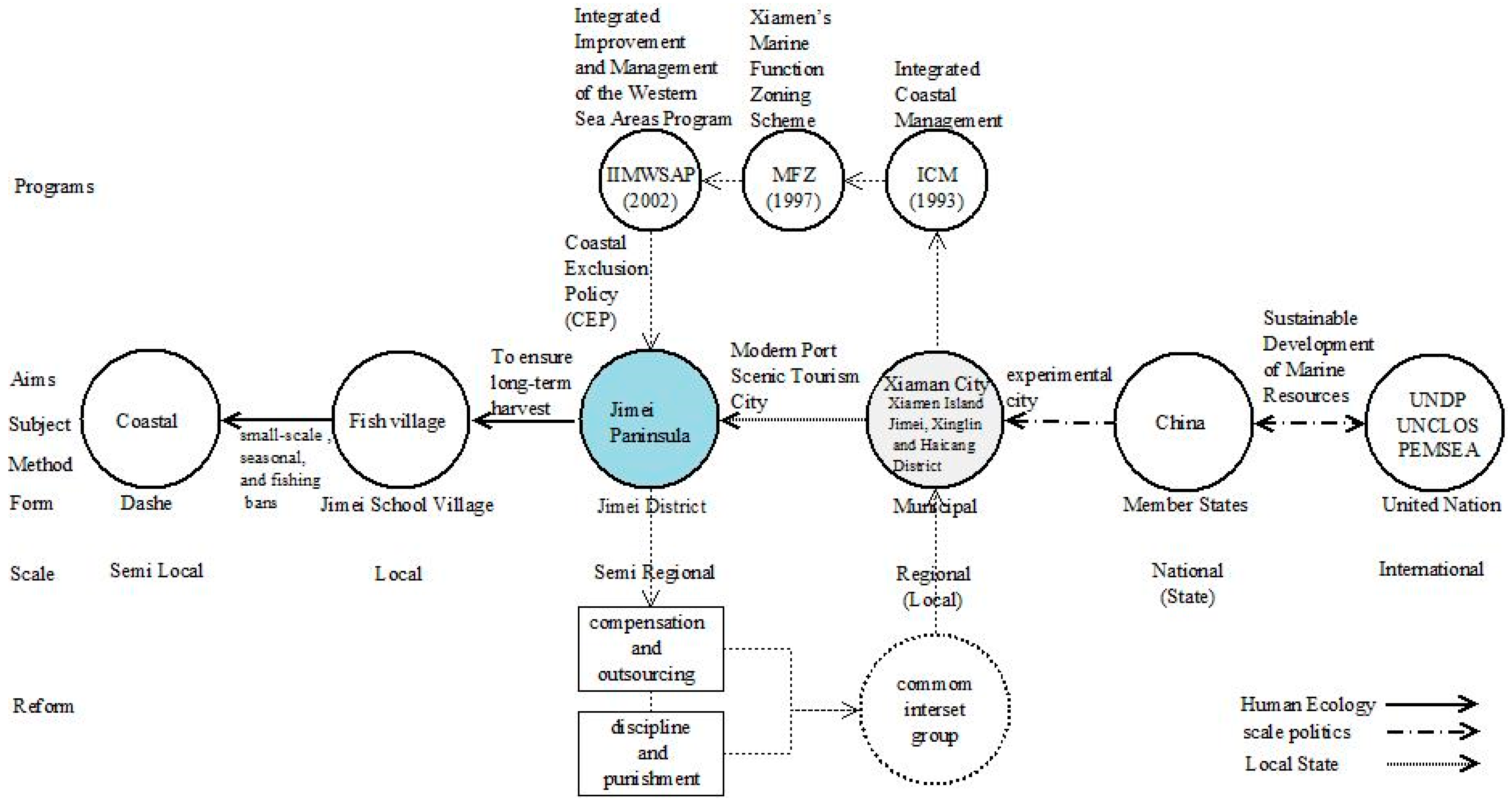
Disclaimer/Publisher’s Note: The statements, opinions and data contained in all publications are solely those of the individual author(s) and contributor(s) and not of MDPI and/or the editor(s). MDPI and/or the editor(s) disclaim responsibility for any injury to people or property resulting from any ideas, methods, instructions or products referred to in the content. |
© 2023 by the authors. Licensee MDPI, Basel, Switzerland. This article is an open access article distributed under the terms and conditions of the Creative Commons Attribution (CC BY) license (https://creativecommons.org/licenses/by/4.0/).
Share and Cite
Zou, Z.; Zhang, Y.-Y.; Lee, S.-H.; Tsai, S.-C. The Transformation of Coastal Governance, from Human Ecology to Local State, in the Jimei Peninsula, Xiamen, China. Water 2023, 15, 2659. https://doi.org/10.3390/w15142659
Zou Z, Zhang Y-Y, Lee S-H, Tsai S-C. The Transformation of Coastal Governance, from Human Ecology to Local State, in the Jimei Peninsula, Xiamen, China. Water. 2023; 15(14):2659. https://doi.org/10.3390/w15142659
Chicago/Turabian StyleZou, Zhe, Yu-Yan Zhang, Su-Hsin Lee, and Shu-Chen Tsai. 2023. "The Transformation of Coastal Governance, from Human Ecology to Local State, in the Jimei Peninsula, Xiamen, China" Water 15, no. 14: 2659. https://doi.org/10.3390/w15142659
APA StyleZou, Z., Zhang, Y.-Y., Lee, S.-H., & Tsai, S.-C. (2023). The Transformation of Coastal Governance, from Human Ecology to Local State, in the Jimei Peninsula, Xiamen, China. Water, 15(14), 2659. https://doi.org/10.3390/w15142659





